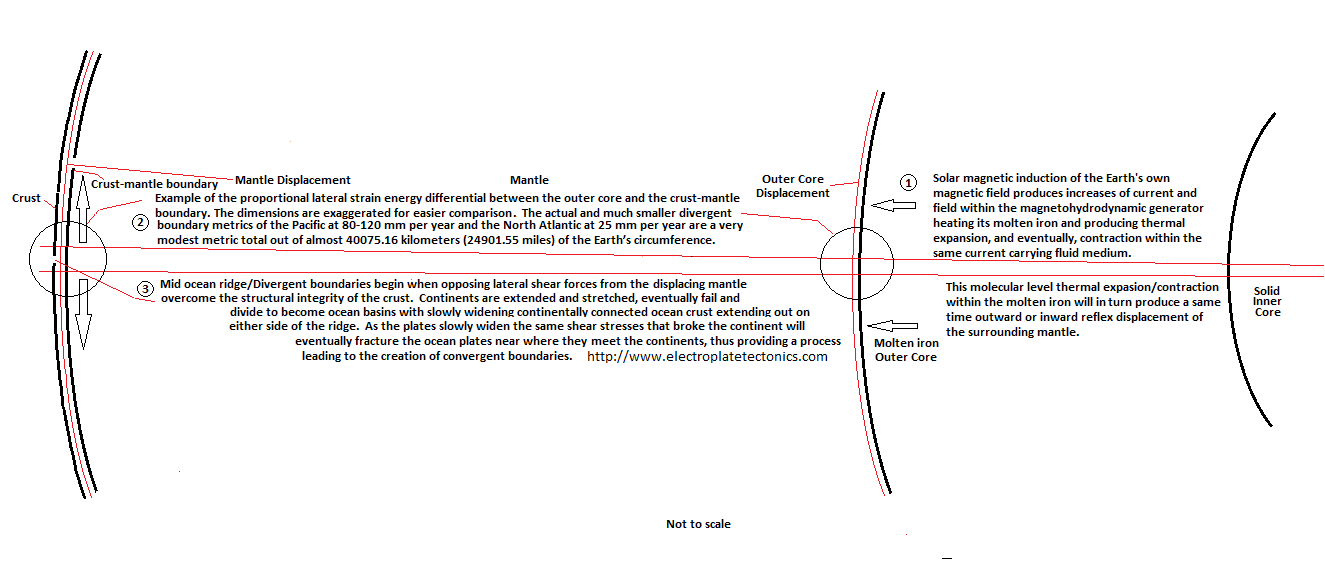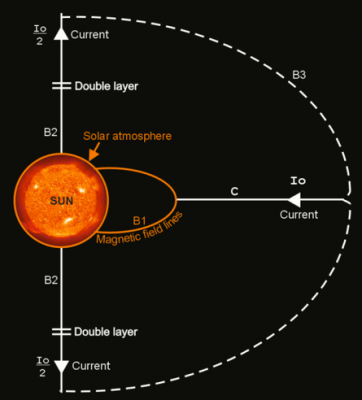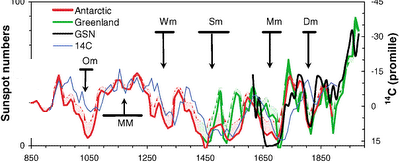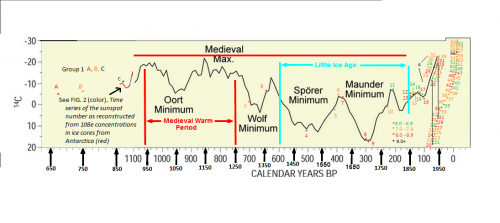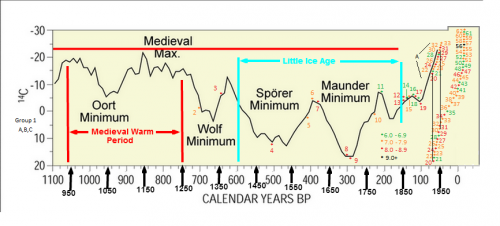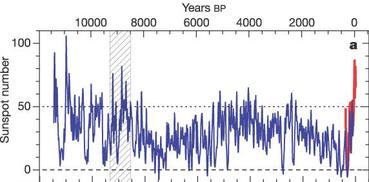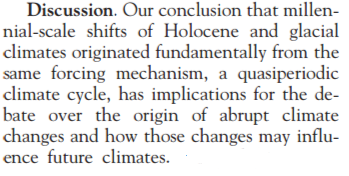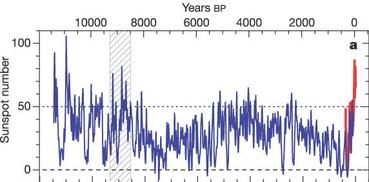-
Posts
978 -
Joined
-
Last visited
Content Type
Profiles
Forums
Events
Everything posted by arc
-
Thanks to you and Wiki I do now.
-
A mechanic may have learned engineering or good design through a given degree of his own successes and failures at it. Some will even have what appears to be a natural ability to do this successfully. They may have paid extra attention to details of design that most other mechanics have not and through this have had few errors of their own making. But engineering is about being as close to 100 % successful in critical systems like buildings, bridges and aircraft as can be had. Trial and error is not as efficient in money and lives spent as is a careful and educated analysis of design. The decade before the Wright brothers success comes to mind, many mechanically inclined individuals died or were crippled at the controls of their creations.
-
Do those results match exactly with your original experiment? What was the corks rotation in relation to, the rotating pan or the room? If the cork stayed oriented to the room your hypothesis may be false. Do you think the magnetism could be applying any influence on the cork? Did you try it without the magnet? Try it as many different ways as you can, it will help you define your understanding of it.
-
yahya, you haven't tried an experiment using a different apparatus, you have nothing to compare your first experimental results against. What if your string is causing the rotation to be transferred from your turntable to your object hanging by the string. You need several different ways to test your idea. The more ways you can test it the more accurate your results will be.
-
WOW Acme! You Z-pinched my mind! . . . . Well Studiot, have you joined some secret plasma cult!
-
I didn't get that from his post. I took from it he was suggesting a generator in effect, albeit involving the Earth and other planets as components to a greater "generator" assembly, involving the Sun as a key component. I thought mention of possible systems of generation he might not have been aware of would help him understand his idea. . I will await his detailed response in eager anticipation.
-
There is some evidence of an electric component to our Sun. The first is the discovery of concentrated cosmic ray sources at close proximity to Earth. http://www.newscientist.com/article/dn20436-strange-cosmic-ray-hotspots-stalk-southern-skies.html#.U3wCCfldUeg "Cosmic rays crashing into the Earth over the South Pole appear to be coming from particular locations, rather than being distributed uniformly across the sky. Similar cosmic ray "hotspots" have been seen in the northern skies too, yet we know of no source close enough to produce this pattern." "It's a mystery because the hotspots must be produced within about 0.03 light years of Earth. Further out, galactic magnetic fields should deflect the particles so much that the hotspots would be smeared out across the sky. But no such sources are known to exist." "Milagro has also seen hotspots that appear to come from implausibly distant sources. As an explanation, Felix Aharonian of the Dublin Institute for Advanced Studies in Ireland and colleagues have suggested that there could be a "tube" of magnetic field lines extending between the source and our solar system, funnelling the cosmic rays towards us. However, Aharonian admits the theory is highly speculative." "Others have proposed that a local phenomenon called magnetic reconnection – in which solar magnetic field lines cross and rearrange, converting magnetic energy to kinetic energy – could be accelerating local cosmic rays to energies in the TeV range and beaming them towards Earth, creating the observed hotspots." "It implies that we have a Tevatron in the solar system," says Aharonian, referring to the particle accelerator at Fermilab in Batavia, Illinois. "That's also crazy, but it is at least less crazy than other explanations." Or this could simply be a clue to something else at work. Image created by Ian Tresman , who has no personal connection to this post or its content, on July 13th, 2005, based on an images by Hannes Alfvén in his book Cosmic Plasma (1981), p.55. In 1986 Nobel prize recipient and developer of the Magnetohydrodynamic generation theory (MHD) Hannes Alfven predicted sources of cosmic rays situated along the Sun’s axes in an IEEE publication and NASA Conference. In the Alfvén’s Heliospheric Circuit; the Sun acts as a unipolar inductor (A) producing a current which travels outward along both the axes (B2) and inward in the equatorial plane along the magnetic field lines (B1). The current must close at large distances (B3), either as a homogeneous current layer, or more probable as a pinched current. This inductor has to achieve a lot of power to go out that far and come back. In 2001 researchers published this paper in regards to computer models based on Hannes Alfven work. http://csem.engin.umich.edu/CSEM/Publications/Israelevich2001.pdf MHD simulation of the three-dimensional structure of the heliospheric current sheet P. L. Israelevich 1, T. I. Gombosi 2, A. I. Ershkovich 1, K. C. Hansen 2, C. P. T. Groth 2, D. L. DeZeeuw 2, and K. G. Powell 3 1 Department of Geophysics and Planetary Sciences, Raymond and Beverly Sackler Faculty of Exact Sciences, Tel Aviv University, Ramat Aviv, 69978 Tel Aviv, Israel 2 Space Physics Research Laboratory, Department of Atmospheric, Oceanic and Space Sciences, University of Michigan, Ann Arbor, MI 48109, USA 3 Department of Aerospace Engineering, University of Michigan, Ann Arbor, MI 48109, USA It says this paper is for the purpose of showing “that the three dimensional structure of the heliospheric current system obtained from a self-consistent, first-principles based numerical model of the solar wind outflow with realistic intrinsic solar magnetic field is consistent with Alfven's conceptual model." It has a great description of how the before mentioned Alfven’s unipolar inductor relates to the Earth and the interplanetary magnetic field and Parker spiral. "The warping of the magnetic field in the Parker spiral allows the Earth to cross the thin neutral current sheet that separates the positive and negative sides of the dipole field. The Earth can pass through the current sheet at least twice during each solar rotation (sometimes more than twice, if the current sheet is wavy enough). These crossings are observed at the Earth when the polarity of the Suns magnetic field changes. Predicted by Alfven (1981), the spiral form of the magnetic field lines means that there is a significant radial component of the electric current along with the azimuthal component. Solid lines show the magnetic field lines slightly above the magnetic equator whereas dashed lines correspond to those slightly below the equatorial plane. The only way to satisfy the electric current continuity is to close the radial electric current by field-aligned currents at the polar region of the sun. This current closure leads to the three-dimensional heliospheric current system schematically depicted by Alfven. Thus, the heliospheric current system produced by the Sun acts like a unipolar generator." This electrical potential of the Sun may be why we have magnetic reconnection between the Earth and Sun occurring every eight minutes. http://science.nasa.gov/science-news/science-at-nasa/2008/30oct_ftes/ "Oct. 30, 2008: During the time it takes you to read this article, something will happen high overhead that until recently many scientists didn't believe in. A magnetic portal will open, linking Earth to the sun 93 million miles away. Tons of high-energy particles may flow through the opening before it closes again, around the time you reach the end of the page. "It's called a flux transfer event or 'FTE,” Researchers have long known that the Earth and sun must be connected. Earth's magnetosphere (the magnetic bubble that surrounds our planet) is filled with particles from the sun that arrive via the solar wind and penetrate the planet's magnetic defenses. They enter by following magnetic field lines that can be traced from terra firma all the way back to the sun's atmosphere. On the dayside of Earth (the side closest to the sun), Earth's magnetic field presses against the sun's magnetic field." "Approximately every eight minutes, the two fields briefly merge or "reconnect," forming a portal through which particles can flow. The portal takes the form of a magnetic cylinder about as wide as Earth. The European Space Agency's fleet of four Cluster spacecraft and NASA's five THEMIS probes have flown through and surrounded these cylinders, measuring their dimensions and sensing the particles that shoot through. "They're real.” The cylindrical portals tend to form above Earth's equator and then rollover Earth's winter pole. In December, FTEs roll over the North Pole; in July they roll over the South Pole. This is happening twice as often as previously thought." http://www.nasa.gov/mission_pages/themis/auroras/northern_lights_multi.html In 2007 NASA's five THEMIS spacecraft discovered a flux rope pumping a 650,000 Amp current into the Arctic. Though they are not all of the same energy, it is unlikely that the probes chanced upon the FTE with the highest of all energy levels, so there are likely still higher energy levels to be observed in this phenomena. The 650,000 amps is put into perspective when you consider the FTE's only last about a minute and repeat every 8 minutes, 24 hours a day. That's 7.5 FTE's per hour, 180 per day. That's 117 million amps in a 24 hour period. 42.7 billion amps per year. This behavior is strikingly similar to static discharges of the more domestic varieties.
-
yahya, I think your testing apparatus is giving you a false reading. Could you try using a shallow pan of water on your turntable instead. At the center of the pan place a small magnet. You can get one off the back of an old radio speaker. Now you need a float, get a cork or any material that would float, even a ball would work. Next, with a small nail attach a small piece of steel to the float. The metal must not be too heavy. The float material must stay above the water's surface. Now carefully add some water and test the float material above the magnet. The water must be just deep enough to allow the float to be held in place by the magnetic field's attraction but not touch the magnet or the pans bottom or sides. Now you can test your idea. Slowly rotate the pan and see if the float moves with it. Now take the magnet out and try the experiment again. Do each one multiple times and see if the magnet is applying torque like the string probably was in your original experiment. It may or may not affect these new results, but having two different sets of observations will help you to see what is affecting your data. This should help you see what forces are at play in this experiment.
-
It could have been a red mylar balloon. And they can reflect like a mirror a large amount of light. The simplest answer is almost always the correct answer. Only go toward a more unlikely or more complicated answer after carefully evaluating each possibility.
-
ADVANCE, your dreams and sleep paralysis is most likely the result of the stresses that you have been under recently. You mentioned that you had to leave your home but then allowed to return again. This would be quite stressful on its own without the required additional scrutiny from social services that would follow your return home. The stresses of life in difficult times can disrupt sleep patterns that can manifest into physical and emotional responses. We have all at some point experienced a stress induced response to our environments, from school, work, family, health and life in general. I believe what you saw in the sky was a mylar balloon caught in a common thermal updraft. The mylar can reflect a very large amount of light for its size. The side to side motion is its simple behavior in the thermal's corkscrew of air flow. From a great distance it would appear to be moving side to side in the manner you have described. As a rather similar and quite remarkable example, when I was about 9 or 10 my friend Bobbie picked up a typical plastic bag from a loaf of bread and just tossed it into the air during a spring day lunch recess. The bag went up maybe 3 or 4 meters and was caught by a gentle wind. Over the next 20 - 30 minutes we and a slowly gathering crowd of spectators stood staring skyward as the bag slowly rotated in a thermal created by the sun's energy heating the asphalt play area we were standing on. Eventually at maybe 8 - 10 meters it broke free of the thermal and drifted off, slowly climbing until it was so high my eyes could not maintain a lock on it. You can ask your doctor for help with your current stress and sleep disruption, you may simply be helped by talking about your situation with the doctor or someone he can refer you to. Take hart life is not smooth sailing for most if not all, things will improve when you can eliminate the unlikely causes and focus your attention on the true source of the matter. Good luck and don't be afraid to ask for help.
-
It seems that wisdom is most likely a product of experience. Where the very intelligent will likely become very wise in short time and where even the average old can amongst the young appear to have a "mature" and wise opinion that may run counter to a younger persons sometimes intelligent and educated answer. I can't imagine how many times in the endless history of human warfare that a fresh to the frontline officer ran up against the opinion of the much older and battle experienced subordinate. Wisdom is forged from experience, it is a survivors attribute. And while the intelligent is naturally selected in academy to lead they are nonetheless required to enter battle with the accumulated knowledge of other peoples wisdom as applied to the chaos of war. Some will become quickly wise and the rest will often fail in the most horrific manner. To counter this the academy attempts to build an artificial warfare environment through training, sometimes with computer gaming and sometimes with live fire exercises but none will ever discriminate the wise from unwise like the terror of war. In the end, of those who command in direct line of enemy fire, there is often only the wise and/or lucky left recount the experience.
-
Well, space walking without proper attire has been assumed up till now to be of a non productive means, even without the comparative results sans the space suit.
-
. . . .and shower heads . . . .and light fixtures . . . .and kitchen utensils, from pots to pie pans. . . .and motorcycle type hand grips and general everyday objects found in a typical hardware store (except condoms and diaphragms) that someone could hang from a surf fishing pole and photograph.
-
The British Imperial Airship Scheme; http://www.bbc.co.uk/dna/place-london/plain/A954678 http://en.wikipedia.org/wiki/Imperial_Airship_Scheme The more things change . . . . . .
-
Acme, thank you for stopping in for a look. I'm afraid you have misunderstood that quote; "Accurate prediction of observable surface structures is what this thesis brings to the fight. The convection current model has some nice maths but in the last half century produced a disappointing few predictable results." That quote is referring to mantle convection in regards to its inability to make even the most tenuous prediction of surface geology. I should have said mantle convection model, I believe billiards and I wrangled over this error of mine before, my apologies. I'm a big supporter of Hannes Alfven's Magnetohydrodynamics generation theory. And I am not challenging it at all, my model would be doomed without it. I believe this post below ,#15, expresses my attitude on this accurately. Posted 19 April 2013 - 12:04 AM "The problem I sense in this debate is the current model is stalled at not locating the convection that was originally speculated by Arthur Holmes, and now mantle plume theory has been promoted as the hopeful replacement to validate convection. But if one was to be honest about convection theory you would have to admit the theory started as what seemed a brilliantly simple solution for what were simpler times. Times before plate tectonics, and as time has progressed more has been demanded of it." "I personally believe if Hannes Alfven's Magnetohydrodynamics generation theory MHD, that is the standard model of the Earth's core and field generator, had preceded mantle convection theory (There it is) this outer core thermal cycle I am now promoting would have been obvious considering the earlier work of Austrian Edward Suess (1831-1914) and American James Dwight Dana (1813-1895) who both independently observed mountain structures as the result of contraction. I think the additional evidence 50 years ago that included extensional processes such as the Basin and Range area would have led to formation of this idea maybe 40-50 years ago. Geology has been preoccupied with convection and it is still an unconfirmed mathematical model. Could an over reliance in complex maths have obstructed what would have been observed by simple field work?" Ouch! I hope I haven't given that impression. But I do feel there is a rather unanimous expectation of the scientists who post here that little of any value has ever been proposed here by a novice, so nothing of value will ever be proposed, now, or in the future. Add to that, this model is rather far reaching. It encompasses surface and subsurface geology, climate, ocean heat flux and places past glacial and interglacial phenomena all in context to this model. Even PETM events. And no one is interested in reading a 40,000 + word thesis written by an amateur. And on top of all that, I can "occasionally" sense the contempt for proposing an alternate explanation to a very beloved and deeply held opinion shared with "97% of all climate scientists". But I have been true to the science, I have looked for answers where no one else has, or even more so, cared to. And, I have built a model that is remarkably straight forward and unusually simple by any measure used. This is an Idea for a new generation to explore, I sense no one with 20 or 30 years of searching for convection er, mantle convection would like to see this show up in their classroom until after they retire. "The math is not simply sufficient, it is necessary." I would love to be gifted with that ability, but I am not. Yet for all the maths that have been thrown at mantle convection and plume theory, the computer upgrades and all of the time and money spent, there has been little to show for it as to predictions of observations of surface geology for 30+ years of trying. http://www.dst.uniro...antle_Dynamics_ "none of the proposed models of mantle convection can account for the simpler pattern in plate motion we observe at the surface, nor has a unique solution been proposed for how material in the mantle convects. At the moment there is no way to link mantle dynamics and plate kinematics at the surface, considering that the mantle and lithosphere are detached."
-
This post above was a challenge made to my Plate Tectonic model from a thread in which I offered a solution to a challenge made to another poster in Climate Science. It was split off to speculations and became; http://www.scienceforums.net/topic/78633-geological-activity-causing-climate-change-split-from-reasons-not-to-worry/ At the time I was using a smaller example of solar magnetic 14C proxy data, but my model still was able to go to the end without a direct challenge to its clear and simple example of solar magnetic climate forcing. I now have the exact data to answer the above challenge. I'm glad to say I can now answer this challenge in the most complete way possible. 14C Synchronization to Japanese Earthquake records Direct evidence of solar magnetic inductance of planetary magnetic field through synchronized seismic records of crustal boundaries using 14C proxy measurements. This model intends to show that there is a measured change in volume of the Earth’s core/outer core complex due to solar magnetic flux. This change is due to thermal expansion from a variable rate of inductance between the Earth’s and Sun’s magnetic fields. The Earth’s magnetic field has a variable rate of intensity, this model simply correlates the field’s variability to the outer core’s thermal displacement. As the magnetic field strengthens the mantle is displaced by the increase in amplitude of the molten iron of the outer core. Current can only be created by magnetic fields, and magnetic fields can only create current. If one changes in strength the other will follow. As the outer core’s molten iron increases in temperature from increased current the liquid iron will expand. A measured thermal expansion or contraction in the molten iron of the Earth’s outer core would produce a short time frame signal, or more exact, an almost immediate response of movement in the outer mantle and crust. As the mantle displaces inward or outward from the core’s thermal expansion or contraction the crust will respond with lateral movements of divergent boundary or convergent boundary metrics. This lateral movement in the crust will vary in each plate, based on each plate’s relative size, or more accurately, its width in relation to the plate’s direction of movement. This is simply due to the plate’s proportion to the total circumference of the Earth; the plates will move a percentage of that total gain or loss of circumference based on the plate’s relative width to that total. As an example of this phenomena, imagine the Earth with one single belt of seafloor around the equator with one end considered attached, immovable while the other end is a short distance away unconnected. Now we apply the thermal increase that displaces the mantle and extends the crust. We can now see the gap between the plate ends open a given degree. Now we all know that if the belt was divided in half and then in quarters it would with each reduction in length show a proportional reduction in movement. This means that a wider ocean plate like the Pacific would show more movement than a narrower one. And the Pacific plate having the widest expanse of plate material shows an unusually large amount of movement resulting in more infill. While the Atlantic being narrower shows a proportionally smaller amount of movement. This is why the San Andreas Fault is one of the most volatile in the world. That section of sea floor extends all the way across the Pacific to the Mariana Trench where it is anchored. The extreme distance multiplies the non-connected end’s movement as shown in the example above. A very small outward movement in mantle will produce divergent boundary and fault movement proportionate to the plates distance from its trench or continental attachment point. And this is also why there is so much seismic activity in Japan. And it is Japan that will allow this model to show a record of the change in the Sun’s magnetic field and its inductance of the Earth’s core. The graph below is courtesy of USGS. http://pubs.usgs.gov/fs/fs-0095-00/fs-0095-00.pdf This is a USGS graph from August 2000 showing carbon-14 content in tree rings going back in time 1,100 years. This is not a temperature proxy but a solar magnetic field energy level proxy, it is a count of the concentration, or lack thereof, of carbon-14 that has been measured in a chronological sampling of the individual seasonal rings of trees of similar growth characteristics. The tree ring content is at a specific value that is a measure of the atmospheric 14C. The graph below is courtesy of USGS and is modified by this author. Fig. 1. Graph reference number (GRN) Group 1-(A, B, C) occurred prior to 900 AD and do not appear on graph proper. It is reasonable to assume that the magnetic flux was increasing due to the portion that is observable, and would be consistent with what 14C levels would approximate taking into account that the Medieval Warm Period (MWP) was yet to occur and the 14C content that is observable in the graph tracks quite accurately the temperature flux that is historically recorded, e.g., the Medieval Warm Period and the Little Ice Age. Fortunately we have other sources for that missing data of solar magnetic strength. The graph below has an additional 50 years of solar magnetic content from 10Be concentrations from ice cores that can place Group 1-C and give a reasonable prediction that solar magnetic content was at still lower levels at Group 1-B and most likely also Group 1-A. E. Bard, G. M. Raisbeck, F. Yiou, and J. Jouzel, Earth Planet. Sci. Lett. 150, 453 (1997). FIG. 2 (color). Time series of the sunspot number as reconstructed from 10Be concentrations in ice cores from Antarctica (red) and Greenland (green). The corresponding profiles are bounded by the actual reconstruction results (upper envelope to shaded areas) and by the reconstructed values corrected at low values of the SN (sunspots)(solid curves) by taking into account the residual level of solar activity in the limit of vanishing SN). The thick black curve shows the observed group sunspot number since 1610 and the thin blue curve gives the (scaled) 14C concentration in tree rings, corrected for the variation of the geomagnetic field]. The horizontal bars with attached arrows indicate the times of great minima and maxima: Dalton minimum (Dm), Maunder minimum (Mm), Spo¨rer minimum (Sm), Wolf minimum (Wm), Oort minimum (Om), and medieval maximum (MM). The temporal lag of 14C with respect to the sunspot number is due to the long attenuation time for 14C. Fig. 3. With additional data from Fig. 2 This model intends to show that a thermal expansion and contraction in the Earth’s core would produce a short time frame signal, or more exact, an almost immediate response of the outer mantle and crust. This model would expect the compression from contraction and shear forces from expansion would impose stresses at divergent and convergent boundary areas. This model expects these forces would show as seismic events along the Pacific plate’s boundaries. It would be likely that a seismic event would occur when the stresses from expansion or contraction changed modes. And it would also be expected that during periods of unusually high magnetic flux lasting for extended periods, as seen to the right side of the graph, it would produce almost continuous seismic activity as the Pacific plate is exposed to the almost continual shear stresses. We are fortunate that the Japanese have kept very accurate records of their seismic history. The record is listed below, each having a Graph Reference Number (GRN) corresponding chronologically to the graph. The list contains all seismic events considered to be greater than 7.0 or which caused significant damage or casualties. Fig 1. As you can see the seismic activity is correlated very convincingly. On the right side of the graph the line moves up out of the little ice age, this is not temperature shown here, it is 14C content in tree ring samples indicating an increase in magnetic field strength. The 14C content is inverted. It is actually declining due to increasing solar magnetic flux, its content is inverted compared to the observed seismic activity seen in the Japanese records. An important point is this 14C variation is not due to any Earth bound forcing agent. The vertical rise (reduction in content) from about 1820 for example, is entirely the product of solar magnetic flux. The Sun’s varying magnetic field is the only mechanism controlling 14C content and timing. As you can clearly see the extreme solar magnetic flux activity is directly corresponding to the seismic activity. And most of the other events correspond to changes in the direction of magnetic flux. The Japanese records began before the Medieval Warm Period and the lack of seismic events during the MWP seem to indicate stabilization in the core/mantle thermal content. The solar magnetic flux may be high enough to maintain the crust in a stable configuration with lower energy divergent or convergent seismic movement. Remember this graph does not show actual movement, temperature, or any other content other than solar magnetic flux shown by proxy of 14C content in tree rings. The earthquake source material only lists earthquakes 7.0 and greater, and this does not eliminate the likelihood that there was a continuous occurrence of lower than 7.0 seismic events. I have checked other sources for these events and they are not easily located. If they did not kill people and cause tsunamis they may not have been recorded. I need to find a copy of; Catalogue of Historical Data on Japanese Earthquakes. The extreme magnetic flux shown on the right of Fig. 1 that correlates to almost continuous seismic activity can be further clarified in graph below; http://www.ncdc.noaa.gov/paleo/pubs/solanki2004/solanki2004.html Fig.4 Unusual activity of the Sun during recent decades compared to the previous 11,000 years Nature, Vol. 431, No. 7012, pp. 1084 – 1087, 28 October 2004. S.K. Solanki1, I. G. Usoskin2, B. Kromer3, M. Schüssler1, and J. Beer4 1 Max-Planck-Institut für Sonnensystemforschung (formerly the Max-Planck- Institut für Aeronomie), 37191 Katlenburg-Lindau, Germany 2 Sodankylä Geophysical Observatory (Oulu unit), University of Oulu, 90014 Oulu, Finland 3 Heidelberger Akademie der Wissenschaften, Institut für Umweltphysik, Neuenheimer Feld 229, 69120 Heidelberg, Germany 4 Department of Surface Waters, EAWAG, 8600 Dübendorf, Switzerland “According to our reconstruction, the level of solar activity during the past 70 years is exceptional, and the previous period of equally high activity occurred more than 8,000 years ago. We find that during the past 11,400 years the Sun spent only of the order of 10% of the time at a similarly high level of magnetic activity and almost all of the earlier high-activity periods were shorter than the present episode.” Fig 1. These records obtained from; http://en.wikipedia.org/wiki/List_of_earthquakes_in_Japan “This is a list of earthquakes in Japan with a magnitude of 7.0 or above or which caused significant damage or casualties. As indicated below, magnitude is measured on the Richter magnitude scale (ML) or the moment magnitude scale (Mw), or the surface wave magnitude scale (Ms) for very old earthquakes. The present list is not exhaustive and reliable and precise magnitude data is scarce for earthquakes that occurred prior to the development of modern measuring instruments.” GRN 6 – 1605 AD, GRN 8 – 1703 AD, GRN 9 – 1707 AD and GRN 11 – 1792 AD, all occurred at points of major directional change of either increasing or decreasing magnetic flux. GRN 2 – 1293 AD and GRN 4 – 1498 AD occur at smaller directional changes, leaving just 3, 5, 7 and 10 occurring during minor increases or decreases in magnetic flux content. This is remarkable that all but 4 out of the 62 documented seismic events occurred during very pronounce points of solar magnetic flux. GRN’s 20 – 62 all occur in a very compressed chronologic period. Referring to area A; there is clear synchronization of events 20-30 with the observed increasing solar magnetic energy. Seismic event GRN 20 begins a period of chronologic synchronization to the 14C proxy timeline and continues to the last 14C data at around GRN 30 at 1950. This is remarkable evidence of a direct volumetric link between solar magnetic energy levels and crustal displacement as outlined in the model. This is concurrent to the already outlined link to atmospheric forcing by strain energy and resulting production of magma at the crust/mantle boundary area. Graph reference number (GRN) Group 1-(A, B, C) occurred prior to 900 AD and do not appear on graph Fig. 1 proper. (A) (GRN) Group 1; November 29, 684 (Gregorian calendar) November 26, 684 (Julian calendar) 8.4 MK (Kawasumi scale) Known as the Hakuhou Nankai earthquake, 32.8°N 134.3°E, References variously estimated the quake as having a magnitude of 8.0 to 8.4 (B) (GRN) Group 1; June 5, 745(G) June 1, 745(J), 7.9 MK, occurred at Minoh 34.8°N 135.5°E, Some references describe the quake as occurring on June 9 © (GRN) Group 1; July 13, 869(G) July 9, 869(J), ~9.0 MK, Name: 869 Jogan Sanriku earthquake, 38.5°N 143.8°E The resulting tsunami caused extensive flooding of the Sendai plain, destroying the town of Tagajō. The following earthquakes appear on the graph Fig 1. (GRN) 2; – May 27, 1293(G) May 20, 1293(J) 7.1–7.5, Name: 1293 Kamakura earthquake, location: 35.2°N 139.4°E, It possibly triggered a tsunami (though not all experts agree) and the death toll (DT) has been reported as 23,024. (GRN) 3; – August 3, 1361(G) July 26, 1361(J) 8.25~8.5 M, Name: Shōhei earthquake, location: 33.0°N 135.0°E (GRN) 4; – September 20, 1498(G) September 11, 1498(J),8.6 MK, Name: 1498 Meiō Nankaidō earthquake, location: 34.0°N 138.1°E, It had a magnitude estimated at 8.6 MS and triggered a large tsunami. The death toll associated with this event is uncertain, but 31,000 casualties were reported. (GRN) 5; – January 18, 1586, 7.9 MK Name: Tensho or Ise Bay earthquake, some islands in Ise Bay reportedly disappeared. (GRN) 6; – February 3, 1605, 7.9 MK, Name: 1605 Keichō Nankaidō earthquake, location: 33.5°N 138.5°E, DT. 5,000+, It had an estimated magnitude of 7.9 on the surface wave magnitude scale and triggered a devastating tsunami that resulted in thousands of deaths in the Nankai and Tōkai regions of Japan. (GRN) 7; – December 2, 1611, 8.1 M, Name: 1611 Keicho Sanriku earthquake, location: 39.0°N 144.4°E, DT. 2,000+ epicenter off the Sanriku coast in Iwate Prefecture. (GRN) 8; – December 31, 1703, 8 ML, Name: 1703 Genroku earthquake, DT. 5,233 This earthquake shook Edo and killed an estimated 2,300 people. The earthquake is thought to have been an interplate earthquake. This earthquake then resulted in a tsunami reported to have caused more than 100,000 fatalities. (GRN) 9; – October 28, 1707, 8.6 ML, Name: 1707 Hōei earthquake, Off the Kii Peninsula, DT. 5,000+ Struck both the Nankaidō and Tokai regions, causing moderate to severe damage throughout southwestern Honshu, Shikoku and southeastern Kyūshū. (GRN) 10; – April 24, 1771, 7.4 MK, Name: 1771 Great Yaeyama Tsunami, location: 24.0°N 124.3°E, DT 13,486 (GRN) 11; – May 21, 1792, 6.4 MK, Name: 1792 Unzen earthquake and tsunami, location: 32.8°N 130.3°E, DT 15,448, changing of the Ariake Sea coastline, in the center of Mount Unzen, Kumamoto Prefecture and the Amakusa Islands were affected by the tsunami. (GRN) 12; – December 23, 1854, 8.4 MK, Name: 1854 Ansei-Tōkai earthquake, location: Suruga Bay, DT. 2,000 (GRN) 13; – December 24, 1854, 8.4 MK, Name: Ansei-Nankai earthquake, location: Nankai Trough, DT. 10,000+. (GRN) 14; – November 11, 1855, 6.9 MK, Name: Ansei Edo earthquake, DT. 6,641, One hundred and twenty earthquakes and tremors in total were felt in Edo in 1854–55. (GRN) 15; – April 9, 1858, 7.0-7.1 Name: Hietsu earthquake, location: Atotsugawa Fault, DT.200–300 (GRN) 16; – July 28, 1889, 6.3 M, Name: 1889 Kumamoto earthquake, location: Tatsuda fault, First major earthquake after the establishment of the Seismological Society of Japan in 1880. (GRN) 17; – October 28, 1891, 8.0 ML, Name: 1891 Mino-Owari earthquake, location: Neodani Faultline, DT. 7,273 (GRN) 18; – June 20, 1894, 6.6 ML, Name: Meiji Tokyo earthquake, location: Tokyo Bay. (GRN) 19; – June 15, 1896, 8.5 ML, Name: Meiji-Sanriku earthquake, DT. 22,000+. (GRN) 20; – September 1, 1923, 8.3 ML, Name: 1923 Great Kantō earthquake, location: Izu Ōshi, DT. 142,800 (GRN) 21; – May 23, 1925, 6.8 ML, Name: 1925 Kita Tajima earthquake, DT. 428 Epicenter (35.6 degrees north latitude, 134.8 degrees east longitude) Maruyama River estuary. (GRN) 22; – March 27, 1927, 7.6 ML, Name: 1927 Kita Tango earthquake, location: Tango Peninsula in Kyoto Prefecture, DT. 3,020 (GRN) 23; – November 26, 1930, 7.3 Ms, Name: 1930 North Izu earthquake, location: Izu Peninsula, DT. 272 (GRN) 24; – March 2, 1933, 8.4 Mw, Name: 1933 Sanriku earthquake, location: 290 km (180 mi) east of the city of Kamaishi, Iwate, DT. 3,000+ (GRN) 25; – November 3, 1936, 7.2 Ms, Name: 1936 Miyagi earthquake, location: Miyagi-ken-oki Jishin offshore Miyagi. (GRN) 26; – September 10, 1943, 7.2 ML, Name: 1943 Tottori earthquake, location: offshore from Ketaka District, DT. 1,083 (GRN) 27; – December 7, 1944, 8.1 Mw, Name: 1944 Tōnankai earthquake location: 34.0°N 137.1°E, DT. 1,223 (GRN) 28; – January 13, 1945, 6.8 ML, Name: 1945 Mikawa earthquake, location: Mikawa Bay, (34°42.1′N 137°6.8′E at a depth of eleven kilometers), DT. 1180 + (GRN) 29; – December 20, 1946, 8.1 Mw, Name: 1946 Nankaidō earthquake, location: Nankai Trough, DT. 1,362 (GRN) 3O; – June 28, 1948, 7.1 Mw, Name: 1948 Fukui earthquake, location: 36゜10.3′N 136゜17.4′E near Maruoka, Fukui, DT. 3,769 A major earthquake in Fukui Prefecture, Japan. (GRN) 31; – March 4, 1952, 8.1 Mw, Name: 1952 Hokkaido earthquake, location: Hokkaido Jishin 42.3°N 144.9°E 28 (GRN) 32; – June 16, 1964, 7.6 Mw, Name: 1964 Niigata earthquake, location: Niigata Jishin 50 km north of Niigata, DT. 26 (GRN) 33; – April 1, 1968, 7.5 Mw, Name: 1968 Hyūga-nada earthquake, location: Hyūga-nada Sea. (GRN) 34; – May 16, 1968,8.2 Mw, Name: 1968 Tokachi earthquake, location: Offshore of Misawa, Japan, DT. 52 (GRN) 35; – May 9, 1974, 6.5 Ms, Name: 1974 Izu Peninsula earthquake, location: Jishin near Izu Peninsula, DT. 25 (GRN) 36; – June 12, 1978, 7.7 Ms, Name: 1978 Miyagi earthquake, location: Miyagi-ken-oki jishin just offshore Miyagi Prefecture, DT. 28 (GRN) 37; – July 12, 1993, 7.7 Mw, Name: 1993 Hokkaidō earthquake, location: Hokkaidō Nansei Oki Jishin 42.851°N 139.197°E, DT. 202 (GRN) 38; – December 28, 1994,7.7 Mw, Name: 1994 offshore Sanriku earthquake, location: Sanriku-haruka-oki Jishin 40.451°N 143.491°E, DT. 3 (GRN) 39; – January 17, 1995, Name: 7.2 Mw Great Hanshin earthquake, location: (Hanshin-Awaji Daishinsai ) northern end of Awaji Island, DT. 6,434 (GRN) 40; – May 4, 1998 , 7.5 Mw, Name: 1998 Ryukyu Islands earthquake, location: Ishigakijima nanpō-oki jishin 22.30°N 125.30°E, DT. 0 The epicentre was in the Philippine Sea and far off the coast (260km from Ishigaki Island, Japan, 400 km from Basco, Philippines, and 425 km from Hualian, Taiwan). (GRN) 41; – March 24, 2001, 6.7 Mw, Name: 2001 Geiyo earthquake, location: Nisen-ichi-nen Gēyo Jishin 34.083°N 128.020°E, DT. 2 (GRN) 42; – September 25, 2003, 8.3 Mw, Name: 2003 Hokkaidō earthquake, Hokkaidō Jishin 41.78°N 143.86°E, DT. 1 (GRN) 43; – October 23, 2004, 6.9 Mw, Name: 2004 Chūetsu earthquake, location: Ojiya, Niigata, DT. 40 (GRN) 44; – March 20, 2005, 7.0 Mw, Name: 2005 Fukuoka earthquake, location: In the Genkai Sea about 6 km (3.7 mi) northwest of Genkai Island at the mouth of Fukuoka Harbor, DT. I (GRN) 45; – August 16, 2005,7.2 Mw, Name: 2005 Miyagi earthquake, location: Miyagi-ken Oki Jishin about 55 km (34 mi) due east of the Oshika Peninsula in Miyagi Prefecture. (GRN) 46; – November 15, 2006,8.3 Mw, Name: 2006 Kuril Islands earthquake, location: Chishima Rettō Oki Jishin, about 160 km (99 mi) due east of the southern tip of Simushir in the Kuril Islands. (GRN) 47; – January 13, 2007, 8.1 Mw, Name: 2007 Kuril Islands earthquake, location: 46°28.8′N 154°04.48′E (GRN) 48; – March 25, 2007, 6.9 Mw, Name: 2007 Noto earthquake, location: about 11 km (6.8 mi) due west of the southern end of the town of Wajima . (GRN) 49; – July 16, 2007,6.6 Mw, Name: 2007 Chūetsu offshore earthquake, location: Niigata-ken Chūetsu Oki Jishin, about 29 km (18 mi) west of Niigata, DT. 11 (GRN) 50; – June 14, 2008, 6.9 Mw, Name: 2008 Iwate-Miyagi Nairiku earthquake, location: Iwate Miyagi Nairiku Jishin, about 1 km (0.62 mi) east of Narusawa Onsen in northwest Iwate Prefecture, DT. 12 (GRN) 51; – August 9, 2009, 6.9-7.1 Mw, Name: 2009 Izu Islands earthquake, location: 33.144°N, 138.040°E, depth 303.1 km. (GRN) 52; – August 11, 2009, 6.5-6.6 Mw, Tokai Area Earthquake, location 33.8°N, 138.50°E, depth 20.0 km. DT. I (GRN) 53; – February 26, 2010, 7.0 Mw, Name: Ryūkyū Islands earthquake, location: 25.902°N, 128.417°E, depth 22.0 km, DT. 1 (GRN) 54; – December 21, 2010, 7.4 Mw, Name: Bonin Islands earthquake, location: 26.866°N, 143.739°E, depth 14.9 km. (GRN) 55; – March 9, 2011, 7.2 Mw, Name: 2011 Tōhoku earthquake foreshock, location: Tōhokuchihō Taiheiyō Oki Jishin (Higashi Nihon Dai-Shinsai) 38.424°N, 142.836°E, depth 32 km. (GRN) 56; – March 11, 2011,05:46:23 UTC, (14:46 JST), 9.0 Mw, Name: 2011 Tōhoku earthquake, location: Tōhokuchihō Taiheiyō Oki Jishin, (Higashi Nihon Dai-Shinsai), 38.510°N, 142.792°E, depth 24.4 km, 15,883 deaths, confirmed. (GRN) 57; – March 11, 2011, 06:25:50 UTC, 7.1 Mw, Name: 2011 Tōhoku earthquake aftershock, location: Tōhokuchihō Taiheiyō Oki Jishin (Higashi Nihon Dai-Shinsai), 38.106°N, 144.553°E, depth 19.7 km. (GRN) 58; – April 7, 2011, 23:30:00 JST, 7.1 Mw, Name: 2011 Miyagi earthquake aftershock, location: 38.253°N, 141.640°E, depth 49 km, DT. 4 (GRN) 59; – April 11, 2011, 17:16:13 JST, 7.1 Mw, Name: 2011 Fukushima earthquake aftershock, location: Fukushima-ken Hamadori Jishin 37.007°N, 140.477°E, depth 10 km, DT. 6 (GRN) 60; – July 10, 2011, 10:57:12 JST, 7.0 Mw, Name: 2011 Fukushima earthquake aftershock, location: 38.040°N, 143.287°E, depth 49 km, DT. 0. Quake was centered c. 242 km SW of Hachijo-jima. (GRN) 61; – January 1, 2012, 14:27:54 JST, 6.8 Mw, Name: Izu Islands, Japan, location: 31.416°N, 138.155°E, depth 348.5 km. 242 km (150 miles) SW of Hachijo-jima, Izu Islands, Japan. (GRN) 62; – December 7, 2012, 17:18:24 JST, 7.3 Mw, Name: 2012 Kamaishi earthquake, location: 37.700°N, 144.600°E, depth 32.0 km, 293 km (182 miles) SE of Kamaishi, Japan, 492 km (306 miles) ENE of Tokyo, Japan.
-
Inductance is inductance. You know, Uranus and Neptune's field generators are believed to be warm water and ammonia. Whats good for the goose, I mean Ganymede, is . . . . .
-
http://www.igpp.ucla.edu/people/mkivelson/Publications/ICRUS1572507.pdf "Magnetometer data from Galileo’s multiple flybys of Ganymede provide significant, but not unambiguous, evidence that the moon, like its neighboring satellites Europa and Callisto, responds inductively to Jupiter’s time-varying magnetic field." Are they not confirming that Europa and Callisto do "respond(s) inductively to Jupiter’s time-varying magnetic field". OK, try this; http://www.ncdc.noaa.gov/paleo/ctl/clisci10kb.html Acme, you must stop by my Plate Tectonic thread sometime, I have some interesting things to share and discuss with you.
-
The coupling of two fields should first be demonstratively shown to be possible, to have been observed and measured in a significant way. http://www.igpp.ucla.edu/people/mkivelson/Publications/ICRUS1572507.pdf "Magnetometer data from Galileo’s multiple flybys of Ganymede provide significant, but not unambiguous, evidence that the moon, like its neighboring satellites Europa and Callisto, responds inductively to Jupiter’s time-varying magnetic field." The evidence of mutual inductive coupling between the Sun and Earth must be coaxed out of multiple sources. All of them suggesting through careful comparison a link to a solar magnetic coupling. This is of course 14C proxy data that just happens to correlate to the climate variation of the last 1100 years. Additionally, I can show this correlation going back to 11,400 years BP, just as Bond had proposed; http://en.wikipedia.org/wiki/Bond_event "Bond et al. (1997) argue for a cyclicity close to 1470 ± 500 years in the North Atlantic region, and that their results imply a variation in Holocene climate in this region. In their view, many if not most of the Dansgaard–Oeschger events of the last ice age, conform to a 1,500-year pattern, as do some climate events of later eras, like the Little Ice Age, the 8.2 kiloyear event, and the start of the Younger Dryas." This link is to Bond's 1997 publication regarding this phenomenon. http://www.bio.puc.cl/labs/clatorre/SemV/Bond_etal_1997_pervasivemillenialHolocene.pdf I have multiple threads started in this regard, I believe I would be considered a thread hijacker to include any more of this material here.
-
“I wanted very much to learn to draw, for a reason that I kept to myself: I wanted to convey an emotion I have about the beauty of the world. It's difficult to describe because it's an emotion. It's analogous to the feeling one has in religion that has to do with a god that controls everything in the whole universe: there's a generality aspect that you feel when you think about how things that appear so different and behave so differently are all run "behind the scenes" by the same organization, the same physical laws. It's an appreciation of the mathematical beauty of nature, of how she works inside; a realization that the phenomena we see result from the complexity of the inner workings between atoms; a feeling of how dramatic and wonderful it is. It's a feeling of awe — of scientific awe — which I felt could be communicated through a drawing to someone who had also had this emotion. It could remind him, for a moment, of this feeling about the glories of the universe.” ― Richard P. Feynman, Surely You're Joking, Mr. Feynman!
-
Yes I know, I thought it was a pretty poor attempt at describing the process. Must have been a lowly clerk at NOAA that wrote that gem. But anyway, its the correlations that Bond made that are important. http://en.wikipedia.org/wiki/Geomagnetic_reversal "The latest one, the Brunhes–Matuyama reversal, occurred 780,000 years ago. A brief complete reversal, known as the Laschamp event, occurred only 41,000 years ago during the last glacial period. That reversal lasted only about 440 years with the actual change of polarity lasting around 250 years. During this change the strength of the magnetic field dropped to 5% of its present strength. Brief disruptions that do not result in reversal are called geomagnetic excursions." The difficulty is finding solar magnetic proxy data from sources like 14C or 10Be (Beryllium-10) that go back far enough to compare to and possibly correlate with the most recent paleomagnetic evidence of reversals. http://www.ncdc.noaa.gov/paleo/pubs/solanki2004/solanki2004.html "Here we report a reconstruction of the sunspot number covering the past 11,400 years, based on dendrochronologically dated radiocarbon concentrations." This is the best (farthest back in time) record I have found.
-
http://www.ncdc.noaa...clisci10kb.html "Gerard C. Bond, a researcher at the Lamont Doherty Earth Observatory has suggested that the ~1,500 year cycle of ice-buildup in the North Atlantic is related to solar cycles; when the sun is at its most energetic, the Earth’s magnetic field is strengthened, blocking more cosmic rays, which are a type of radiation coming in from deep space. Certain isotopes, such as carbon-14, are formed when cosmic rays hit plants and can be measured in ancient tree rings because they cause the formation of carbon-14. High levels of carbon-14 suggests an inactive sun. In his research Bond noted that increases in icebergs and drift ice occurred at the same times as the increase in carbon-14, indicating the sun was weaker at such times." Bonds keen observation gives us multiple insights into the Earth's field generator; -The Earth's magnetic field's energy level is coupled to the Sun's magnetic field strength. -The ocean was cooler during periods of increased 14C, which always coincides with lower solar magnetic energy levels. http://pubs.usgs.gov/fs/fs-0095-00/fs-0095-00.pdf "An early association between sunspots and terrestrial phenomena was the observation that the number and intensity of aurora borealis sightings were greatest during sunspot maxima when the sun was most active (active sun), and lowest during sunspot minima (quiet sun). Another terrestrial observation was that the Maunder Minimum coincided with the coldest part of the Little Ice Age."
-
That's exactly what some dead guy said would happen.
-
-
Wait . . . This isn't seance forums dot net?

